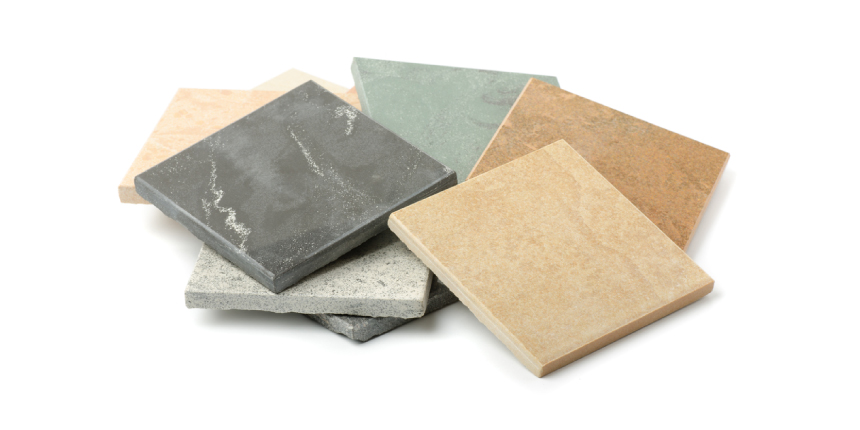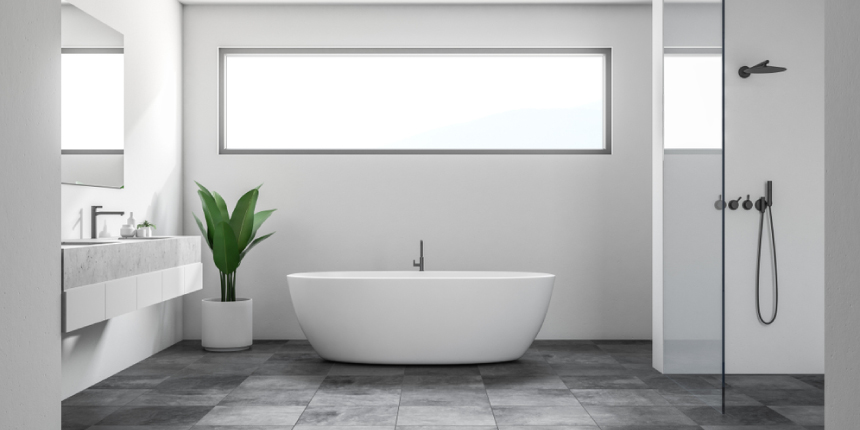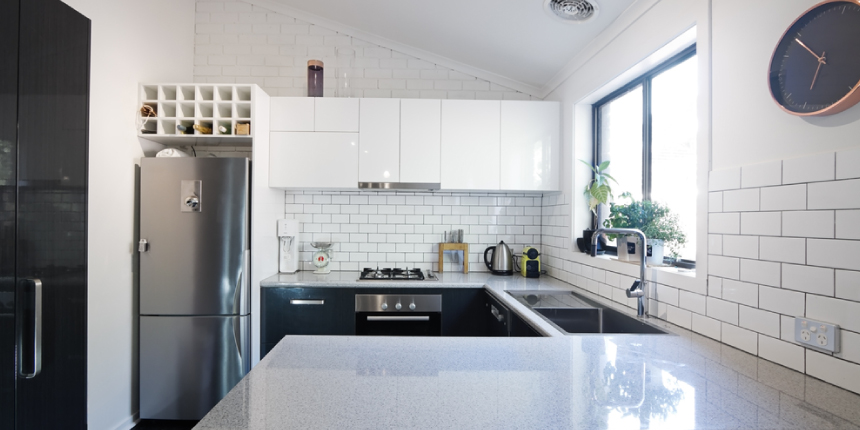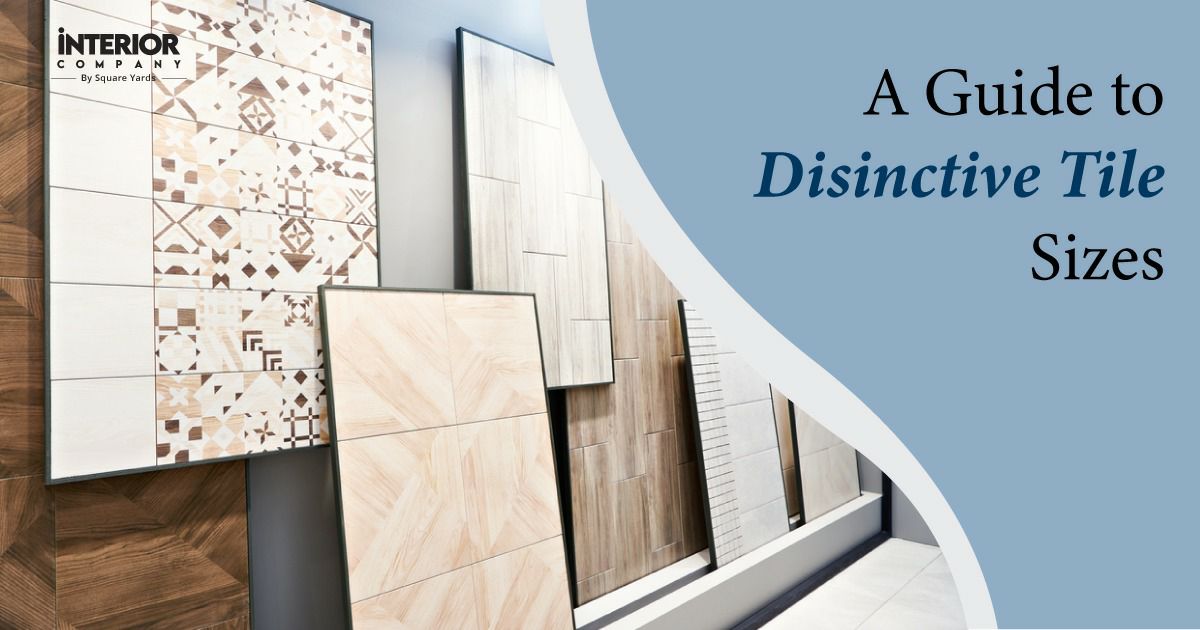To find the most suitable size that sweetens the interior of your home, it is advised to balance the interior aesthetics and functionality. We will not be surprised to hear you say “this is sapping!”
Don’t worry because this blog will help you in determining the sizes of the perfect tiles for any home design.
What Is the Significance of Different Tiles Sizes?
Different tiles sizes have different aesthetics that influence the feel of the room. Large structure tiles i.e 12-18 inches in size can make a room appear bigger while they are also an ideal choice for walls. However, using small tiles will give your space a detailed and cluttered appearance.
Another reason why there are different sizes is that these sizes are distinctive to fit specific places. For example, when shopping for wall tiles size, you will only find large or mid-sized options; which are ideally easier to apply on a wall.
Also Read: What Should be the Ideal Size of Dining Room
Different Tiles and Tiles Sizes
In today’s market, there are several walls and floor tile sizes that can fit your taste. Here are some of the tiles you can choose from:
- Vitrified tiles
- Ceramic tiles
- Porcelain tiles
- Cement tiles
- Quartz tiles
- Stone tiles
- Glass tiles
Manufacturers and producers offer tiles in sizes as small as 0.5”x0.5” to as large as 24”x24”.
1. Floor Tiles Sizes

Floor tiles are generally available in square and rectangular shapes but in a variety of tiles sizes. Standard floor tile sizes vary from two inches to two feet. Nowadays, the most commonly available are 12×12, 18×18, and 12×24 whereas, 8×10 and more for wall tiles sizes.
Big-size tiles of dimensions 24×48, 36×36 and 48×48 are impressive and much more legitimate to use. They work well in modern and minimalistic settings leaving a great first impression. Ceramic, Porcelain and natural kitchen tiles size are available in 12 inches. Tiles for bathrooms on both floors and walls are available in assorted sizes.
Mosaic bathroom tiles size large square tiles vary from 8-,6-,4- and 2- inches. Large square and rectangular tiles for the bathroom and the kitchen
Also Check: What is the Standard Modular Kitchen Dimension
2. Square Tiles

Different sizes of tiles have different inventive influences on your sense of space. Large tiles with a length or width of approximately 30-45cm at the very least, can make a room look more spacious. These tile choices are becoming more and more popular for walls and floors if today’s market demand is anything to go by. It’s time to fetch timeless classic elegance to a traditional home!
Fewer grout lines help make the space feel open, clean and give it a premium look. Add some pzazz to the floor by lodging some 18×18 travertine tiles.
With elegant 12×24 glass tiles, one can create the perfect look for modern kitchens, outdoor pools, or even living rooms.
12×24 white tiles sizes complement design styles ranging from traditional to contemporary. Large tiles also work well in open spaces and help tie two rooms together. Small tiles can add depth to a space or bring it together to make it feel more consolidated. Small tiles are better fitted for showers because they have more grout lines, which guarantees more traction and slip resistance, because who wants to fall down in that beautifully decorated bathroom?
Standard options for rectangular tiles are as follows:
- 1×2,3 and 4
- 2×3,4,5,6 and 8
- 3×4,5,6 and 8
- 5×2,3,4,6 and 8
- 6×8
3. Ceramic Tiles

Available in a variety of size options for floors and walls, ceramic tiles offer great design possibilities for any space, in almost any home style. Ceramic tiles are typically 16×16, 12×12, 6×6 or 4×4 rectangles and come in a variety of finishes. Large-format ceramic tiles are great for high-traffic areas like bathrooms and kitchens but can be used in any room in the house to make a dramatic statement. They come in rectangular and square shapes and can be positioned on walls or floors to leave a mark.
Stone ceramic and wooden tile size are rising in vogue thanks to unique tile printing techniques. Stone-like tiles tend to be more regular in size, whereas wood finish tiles come in plank dimensions intended to imitate real hardwood planks. Distinct wooden tiles sizes for the floor can make the room appear wider and more spacious.
Ceramic and porcelain tiles are meant majorly for floors but they can creatively be used for creating accent walls and backsplashes. One can also use stone-effect ceramic tile sizes in hallways, or consider herringbone or brick grout patterns to add a modern touch to your floors.
The most common ceramic tile sizes are:
- 4×12 and 48
- 6×24,36 and 48
- 7×20
- 8×32,36 and 48
- 9×36
- 12×24 and 48
- 16×32
4. Subway Tiles

Traditional brick subway tiles were the king of bathroom and kitchen backsplashes. Most often they are spread horizontally in very thin joints, but they can also be installed vertically to create the illusion of higher ceilings. Using different sizes of subway tiles can make your home look more urban and chic. For instance, 4×16 subway tiles are appropriate for bathroom walls, as backsplashes, and around showers and bathtubs. Classic 3×12 white subway tiles look great with contrasting dark grout giving them extra dimension. 4×10 subway tiles bring a winsome sense of tradition to your home and make your space feel comfortable.
The most common subway tile sizes are:
- 1×3,4 and 6
- 2×4,6,8 and 12
- 3×6,8 and12
- 4×8,12 and16
Make the Right Choice
The interior design of your home matters a lot and it is vital to make the right choice even if you are choosing the flooring. The tangible walls or floor that you walk on require your keen attention. Make sure to choose the right stone and tiles sizes to suit your aesthetic. Get in touch with the Interior Company and get our most skilful interior designers to give their expertise in order to unlock your dream home.
